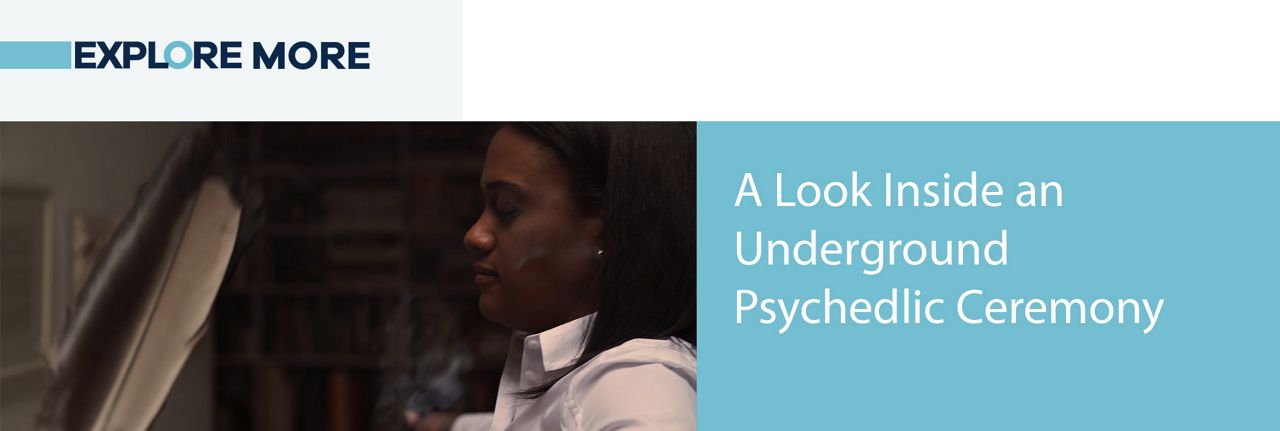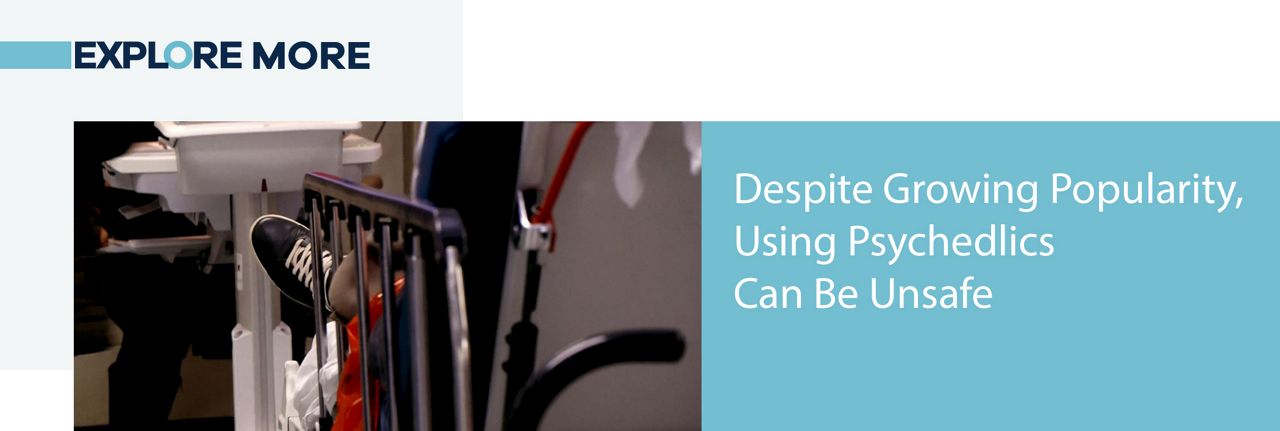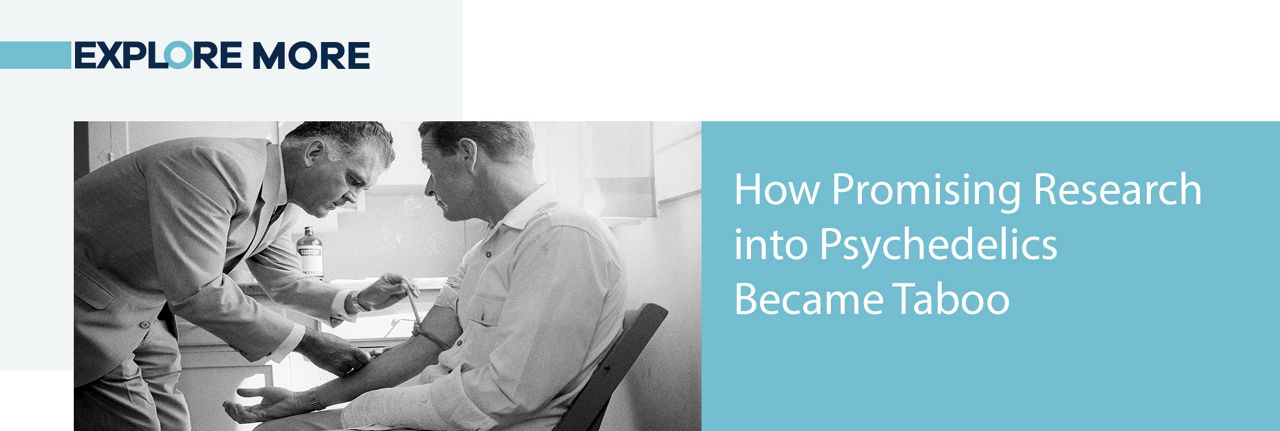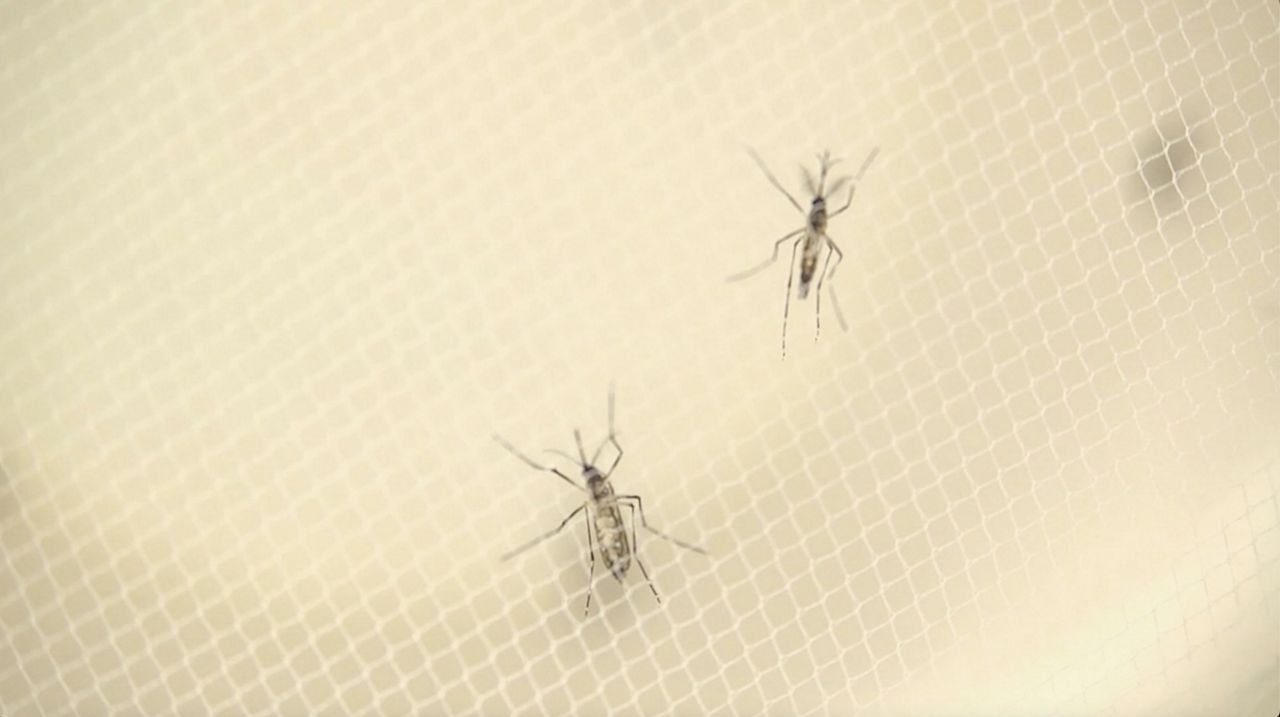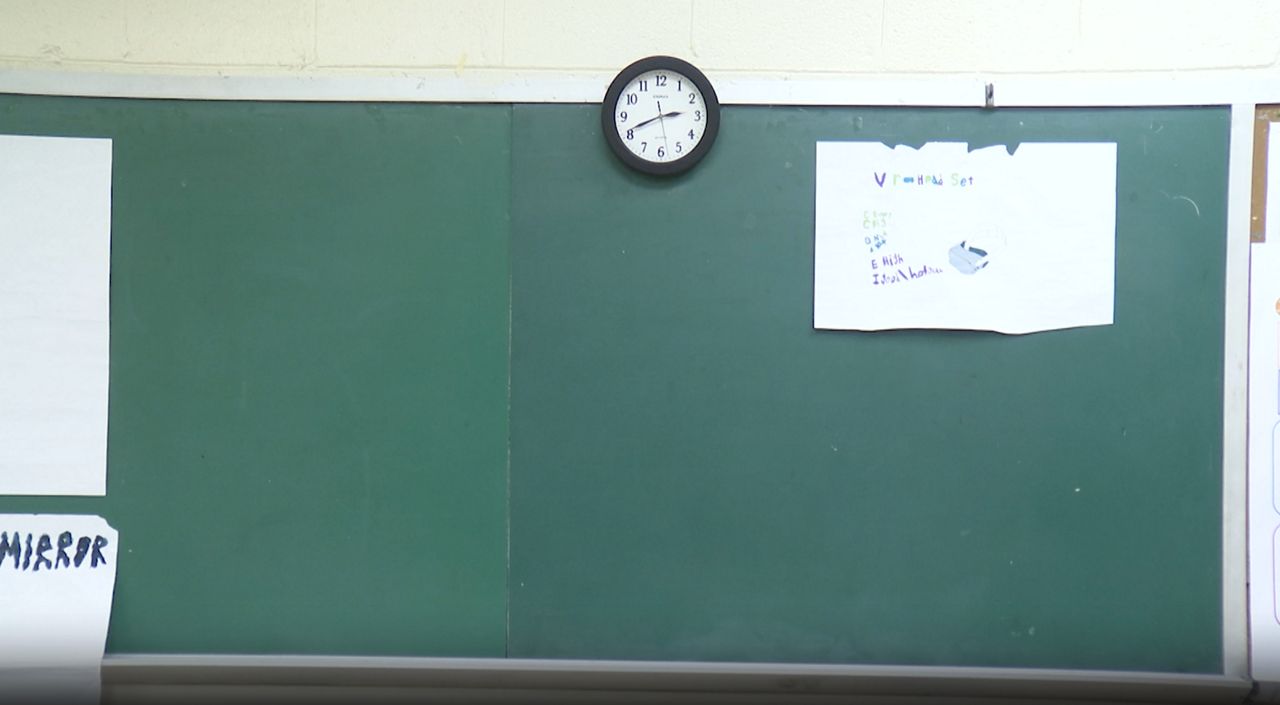Before the ceremony can begin, we are all bathed in smoke, wafted from a burning bundle of sage.
The “Guide”, or facilitator of the ceremony, says they use sage because it’s a well-known cleansing agent. “When people come in from being out in New York City or really anywhere else, you know, they tend to pick up different energies from just people that they interact with. And so it gives a chance for us to clear their energy field so they can start fresh.”
The group of people taking part in this ceremony, in a private Brooklyn home, refer to themselves as a ‘community.’ Together they go on so-called journeys, using psychedelic plants for healing and self-improvement. We have agreed not to share their identities because it is illegal to use or sell hallucinogens, which is also why our team did not try the drugs.
A PLANT MEDICINE CEREMONY
The Guide was trained in a shamanic tradition, which has Peruvian roots. The participants in the journey we attended and filmed are apprentices; they’re training to one day lead their own ceremonies. After the sage, the induction begins; where each person shares what they hope to work on.
“Things change when you have a group of people together,” says the Guide. “Everybody has essentially the same problems, you know? Self-love, huge problem, and not enough nurturing.”
They each take turns sharing their life stories and how the plant medicine has helped them heal. One participant, a Brooklyn native, says he used to be addicted to opioids, alcohol and gambling. “What I realized is that so much of my life was spent in a fight or flight mode. Now becoming ok with things being ok, is my new work. So tonight my intention is to continue fine-tuning that receiving portion of myself.”
After the induction, the participants drink a juice mixture containing psilocybin, the psychedelic ingredient in “magic mushrooms.” Other popular drugs taken in these ceremonies are San Pedro, which can be found in certain cactus plants and ayahuasca, a tea made from a combination of a couple plants.
“That part of your brain that that has all the judgment and the defense mechanisms and all that stuff basically goes dormant,” the Guide explains. He says the plant allows partakers to become more authentic versions of themselves.
Caroline Dorsen, an assistant professor at New York University’s Meyers College of Nursing, has been studying the practice of ceremonial psychedelics for a few years. She has attended about 100 ceremonies as an observer. Her research is published in the journal Addiction Research & Theory. “It's always been happening,” Dorsen says, “but it's been underground here in the U.S. because of the fact that all these medicines were made schedule 1 substances.”
That federal classification means it is believed these drugs have a high potential for abuse. Schedule I substances are tightly regulated and carry a heavier range of criminal penalties than other drugs. Dorsen says the drugs should be regulated, but re-classified into a lesser controlled category because there is no evidence that psychedelics are addictive.
The drugs are not without risk. People with undiagnosed mental illness could experience serious side effects, like mental breaks, that could lead to them getting hurt.
“That's why we talk about being careful. That's why we talk about making sure that people are in settings that are safe,” says Dorsen. “We don't want people taking high doses of potentially powerful drugs with no one there to make sure that they're safe.” She stresses, “much more research is needed.” A reclassification of psychedelics would also allow for greater scientific exploration of the drugs.
Dorsen began researching these underground ceremonies after hearing about them from patients. “It was very different than I had expected it to be, and certainly very different than other drug use that I had done research with in the past. Instead of people talking about drug use as the problem or substance abuse, people were talking about taking these substances as a treatment for substance use and abuse.”
The Guide says using psychedelics in ceremony is completely different from typical media portrayals of recreational drug use. “When people take drugs at a party or at a club and oftentimes recreationally people are trying to check out, you know, they're trying to not be themselves or are trying to escape,” says the Guide. “When people are doing these ceremonies it's really the exact opposite, you know, because people want to check in. They want to see what's going on with themselves.”
The Guide says doing “the work” in community, with other people who are equally as vulnerable, is a key part of the healing process.
Dorsen says the community aspect stood out to her as she observed the groups. For her, it highlighted a fundamental unmet need in society, “we have a real crisis of connection in the United States and that crisis of connection leads to the hopelessness, the disconnection that fuels a lot of depression and anxiety and substance use.”
A LOCAL LOOK
Kentucky ranks 26th out of 50 in terms of prevalence of mental illness and access to care, according to Mental Health America.
There has been a slow movement in some pockets of the country to override the federal classification, allowing greater use of psychedelics with mental health care in mind. In Denver, Colo. voters passed legislation in May to effectively decriminalize psilocybin, and in June, Oakland, Calif. passed a similar bill decriminalizing psilocybin and other psychoactive drugs.
Activists in states like Oregon, Iowa and the rest of California are pushing for similar bills.
A 2006 unanimous Supreme Court ruling determined that adherents of small religious groups can import and use ayahuasca in their worship services, however the groups must apply for a religious exemption status with the DEA. But despite its illegal nature on a federal level, underground communities across the United States are experimenting with various forms of psychedelics to help those dealing with mental health issues.
In Kentucky, at least one shaman operates an underground ayahuasca community working to heal individuals struggling with a range of issues from PTSD to physical abuse to addiction. A recent Viceland docu-series shone a light on numerous two-day journeys of those coming to seek help from one specific shaman.
THE MENTAL HEALTH CRISIS
While the underground ceremonies using psychedelics are illegal, the practice is growing in popularity. This may be a consequence of the limited drugs and resources available to handle a growing, widespread need. One in five Americans has a mental illness, like anxiety, depression, PTSD, bipolar disorder and substance abuse. But nearly a quarter of them say their mental health care needs are not being met.
Experts like Dr. Matthew Johnson, a psychologist at Johns Hopkins University, say it is a crisis. According to the Centers for Disease Control, suicide rates are up, and by more than 30 percent in half of states since 1999. “The need is at an unprecedented level.” Johnson also points to the deaths associated with tobacco and alcohol, “those legal addictions completely dwarf all of the illicit drugs combined, including the opioids and everything else.”
PSYCHEDELIC RESEARCH IS BACK
Johnson is a principal investigator with Johns Hopkins Psychedelic Research Unit. The group is at the forefront of a renaissance of sorts in the U.S.; their work is helping to resurrect study of the drugs. Psychedelics were researched extensively from the 1950s to 70s, but that ended abruptly as a result of the “War on Drugs” campaign of the 1970s. These researchers believe psychedelic medicine could be a really effective treatment option for some.
Carine Chen-McLaughlin took part in Johnson’s 2017 smoking cessation pilot study, where 80 percent of patients stopped smoking after taking two to three doses of psilocybin in pill form.
“I started smoking the summer after I turned 18,” said Carine. “I just wasn't ever able to quit more than probably a day. That was like the longest. She says she tried many times to quit, but it never stuck. “I think what I remember most from all the efforts I made to quit smoking was just being miserable.”
For Carine, smoking was how she coped. “Anxiety, stress, work, you know the family. It's a trigger if something is upsetting me.”
Her doctors constantly encouraged her to quit. She was even diagnosed with emphysema. She says walking up just two flights of steps was a struggle.
During the study, Carine was disappointed to find out she was randomized to the group using the patch. In combination with psychotherapy, the treatment worked somewhat. She went from smoking a pack a day, to just three to five cigarettes each day. But she was still not able to quit.
Pleased with her dedication to the study, the Hopkins researchers decided they would give Carine the opportunity to try psilocybin. The full treatment included several weeks of additional psychotherapy, apart from the official clinical trial.
“It's still a little emotional when I think about that day. I still am mystified at how this all happened, but a part of me just really believed that something out of ordinary has to happen for me to quit smoking.” Carine says she needed something drastic to happen, and she was willing to do whatever it took. But she admits to being nervous at the thought of what she might experience under the influence of psychedelic medicine. Psychologist Albert Garcia Romeu, her therapist during the study, was also her guide in the room, along with a female research assistant.
“They gave me the pill and they were just, you know, asking me about this and asking about that. And it was nothing unusual,” said Carine. But then something started to happen as she stared at an abstract painting on the wall. “Parts of it started to move and I was like, ‘Albert, something on the picture’s moving.’ He said well, you're starting to feel the effect of the drug.”
Carine says, for her, the experience was not fun. “You’re looking at six hours that I was gone and I would say pretty much five and a half hours of that time I was crying.”
One of her most frightening hallucinations was the appearance of big, brownish-gray rain clouds that formed above her. She said the clouds moved down, closer to her, as she laid on the couch. “I thought I was going to suffocate. I don’t know if I did, but I would scream and cry and say ‘Albert!’ you know, from time to time, ‘are you still there?’ And knowing he was there, it’s like OK.”
Carine said she also saw little monsters, some taking the form of snakes. Her deceased mother was there as well throughout the experience, helping her, she says. In the end, Carine was changed. After taking just one dose she was able to quit smoking.
“Something happened to my brain during this session,” she said. “If you put a cigarette in front of me and say I'll give you a million dollars if you touch that cigarette, I can't.”
THE BRAIN ON PSYCHEDELICS
Brain scans done to examine how LSD (lysergic acid diethylamide) affects the brain show what Johnson refers to as a “global change in connectivity.” He says, “there is this increased synchronization across the brain.” Which may be why people using psychedelics, report hearing colors, seeing sounds and feeling a greater sense of self.
Still, researchers like Johnson are just scratching the surface. He estimates they are still five to 10 years away from psilocybin being downgraded from a schedule I controlled substance to something that can be prescribed. “What it's going to take is a single indication. That may be smoking cessation. But it might be depression within or outside of cancer. Really, the most advanced research has been done with depression and anxiety in cancer patients. So, we'll see where it goes.”
Carine said she thinks psilocybin worked for her when other things didn’t because there was a mystical element to the treatment. “I think it takes you to a different place and you have to be ready to let it go. You have to give it to a higher power.”
We asked the ceremony Guide why he believes psychedelics have such profound impact for some. He said, “A lot of times, like after someone has had an experience, they'll say, oh, I felt like a kid again, and in a lot of ways that's an accurate description, because it's about going back to the place before you had defense mechanisms and you get to look at yourself, and you get to see what you're doing without the judgment. And just that by itself can be incredibly healing.”







